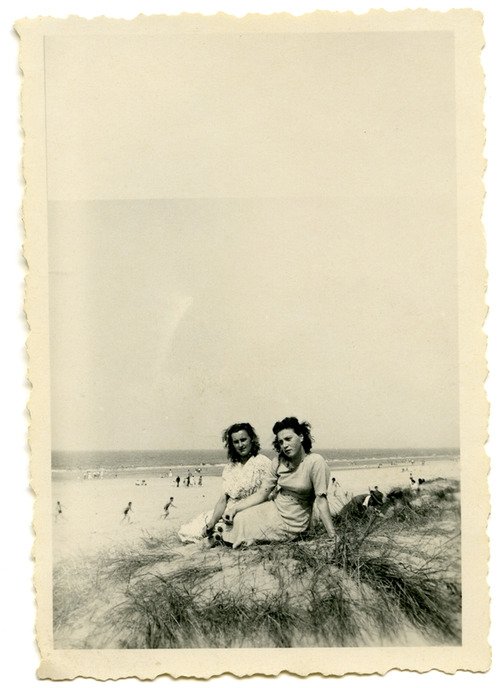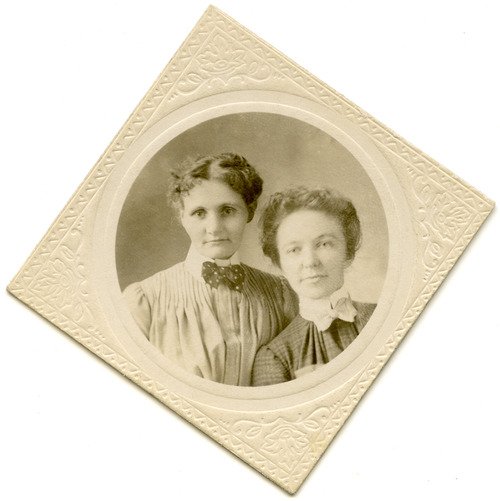Vintage Mementoes
Recently I bought some vintage items on Etsy, a pair of 1940s sunglasses, and a hat (actually one of a few!), but these two sellers used vintage photos for thank you cards. Aptly, the 1940s beach photo above came with the sunglasses.
Both the photos are very tiny, about 6cm wide, and there is only so much one can see with the naked eye. I didn’t notice at first, but the photo above is actually a square negative printed on rectangular paper. When I scanned it at 200% of actual size, I was able to pick out a bit more detail – I love seeing what’s going on in the background of vintage photos.
Her expression is a little pensive, looking away from the camera as though she is thinking of someone far away from her.
Here, there is a man’s hat sitting on a rock just behind the two young women, children running about perhaps playing a ballgame, and numerous people doing the kind of things you do at the beach. You can see the girl closer to the camera is much prettier, and her dress has scalloped sleeves and neckline, and she is wearing a polka dot sash. Her expression is a little pensive, looking away from the camera as though she is thinking of someone far away from her. The other woman is wearing a floral print, and both of them are holding sunglasses in their hands.
I always wonder about the people in such photos – what were they thinking at the moment the shutter snapped? Where are they now, or their descendents?
And who are the two Edwardian women wearing bowties? Mother and daughter perhaps? The woman in the polka dot tie has such weary, deep-sunken eyes and looks much older than the other. Look at the detailing on their dresses – so many pleats!
I love the old cardboard these photos are printed on. I’ve always been fond of those deckle-edged photos because I remember them from old family albums; I even own a pair of scissors that cut like that, but of course I never print photos anymore. The embossed Edwardian frame is perfectly lovely – I actually might get photos printed if you could order frames like that. It makes them seem far more special, real mementoes. I wonder if these women are remembered by someone.
Click images for larger versions.
The Exuberance of Cecil Beaton
 First edition of The Blessing, by Nancy Mitford with cover art by Cecil BeatonRecently I started reading Nancy Mitford’s book The Blessing, which, a few chapters in, is proving very entertaining. I first spotted this first edition book on a shelf in an op shop (thrift store), my eye caught by the author’s name as well as the colourful though tattered spine.
First edition of The Blessing, by Nancy Mitford with cover art by Cecil BeatonRecently I started reading Nancy Mitford’s book The Blessing, which, a few chapters in, is proving very entertaining. I first spotted this first edition book on a shelf in an op shop (thrift store), my eye caught by the author’s name as well as the colourful though tattered spine.
I had heard of Nancy Mitford (1904–1973), but I didn’t know much about her life. One of the famous Mitford sisters, she was a novelist, biographer and journalist. The book The Blessing, is considered one of her best, and was dedicated to her very good friend Evelyn Waugh. He told Mitford he found the book, “admirable, deliciously funny, consistent and complete, by far the best of your writings”.
My eye was caught by the illustration; the cover artwork of this first printing in 1951 is by Cecil Beaton and through the rearing horse, and tilting angles evokes a madcap adventure with the heroine’s young child (the ‘blessing’ of the title) at its centre.
 Portrait of Coco Chanel
Portrait of Coco Chanel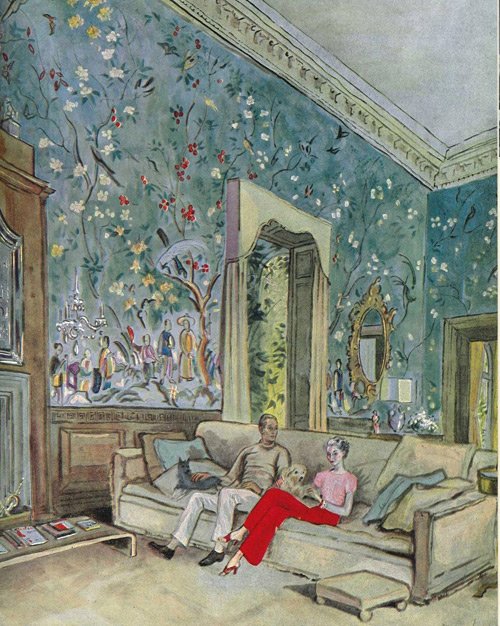 Cecil Beaton (1904–1980) was a prolifically creative person: ‘a fashion, portrait and war photographer, diarist, painter, interior designer and an Oscar-winning stage and costume designer for films and the theatre’. [Wikipedia] I have always admired Beaton’s dedication to detail in his drawings in particular: what patience he had in faithfully depicting the intricacies of interior décor in his portraits of the wealthy! The wallpaper patterns especially impress me, and it is no wonder after all, for he was also a textile designer, and his fabric designs were used by Balenciaga, Dior and Lanvin. (Read more here.)
Cecil Beaton (1904–1980) was a prolifically creative person: ‘a fashion, portrait and war photographer, diarist, painter, interior designer and an Oscar-winning stage and costume designer for films and the theatre’. [Wikipedia] I have always admired Beaton’s dedication to detail in his drawings in particular: what patience he had in faithfully depicting the intricacies of interior décor in his portraits of the wealthy! The wallpaper patterns especially impress me, and it is no wonder after all, for he was also a textile designer, and his fabric designs were used by Balenciaga, Dior and Lanvin. (Read more here.)
Here is a small collection of Beaton’s exuberant illustrations that show a joyful sense of colour and playful riot of pattern and texture.
Images from Pinterest
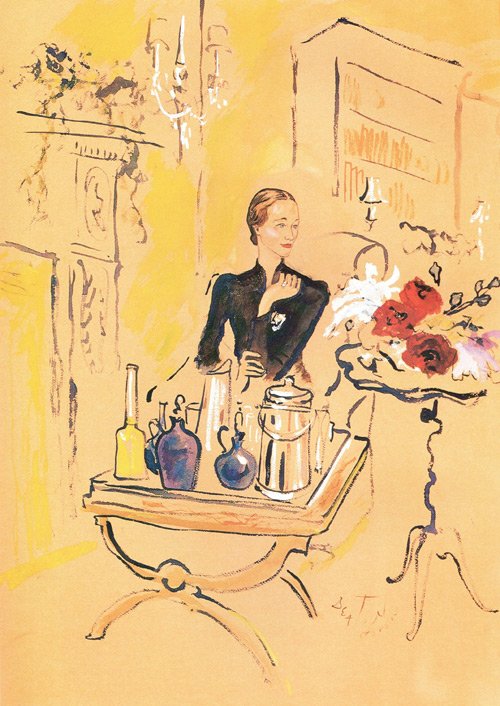 Portrait of the Duchess of Windsor
Portrait of the Duchess of Windsor Beaton's accessories for Vogue magazine
Beaton's accessories for Vogue magazine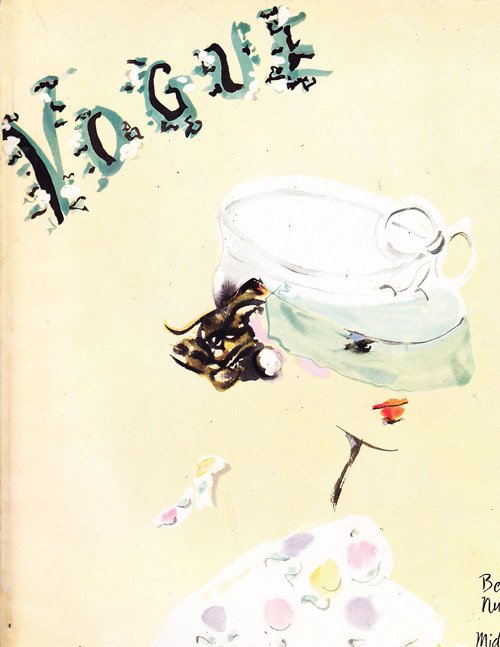 Vogue cover, June 1935
Vogue cover, June 1935 Vogue cover, July 1935
Vogue cover, July 1935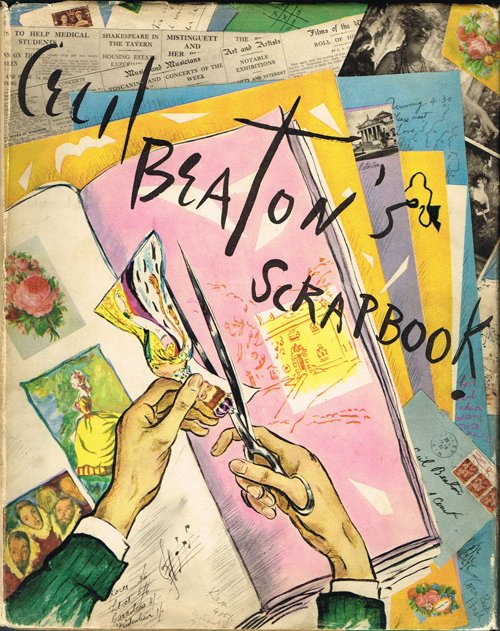 Front cover of one of his personal scrapbooks, full of society photographs
Front cover of one of his personal scrapbooks, full of society photographs Back cover of Cecil Beaton's scrapbook
Back cover of Cecil Beaton's scrapbook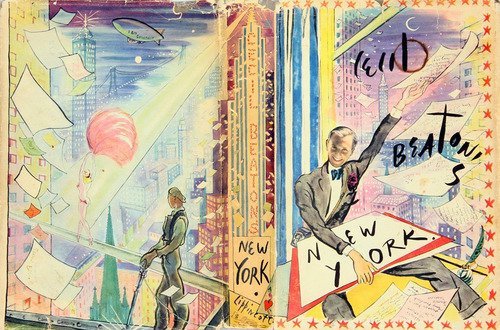 Wraparound book cover (click image for larger version)
Wraparound book cover (click image for larger version)
Simply Colour
 Gaspé – Pink Sky, 1940Can you believe I had never heard of the painter Milton Avery before today? Thanks to Pinterest I discovered his beautiful paintings. The large stretches of almost flat colour of the first one I saw, Gaspé – Pink Sky (1940) immediately put me in mind of Rothko, except that it was representational. What I love about it besides the muted tertiary hues is the simplicity of the stylised shapes that form the landscape, and indeed all his compositions.
Gaspé – Pink Sky, 1940Can you believe I had never heard of the painter Milton Avery before today? Thanks to Pinterest I discovered his beautiful paintings. The large stretches of almost flat colour of the first one I saw, Gaspé – Pink Sky (1940) immediately put me in mind of Rothko, except that it was representational. What I love about it besides the muted tertiary hues is the simplicity of the stylised shapes that form the landscape, and indeed all his compositions.
 Seated Lady, 1953
Seated Lady, 1953 Conversation, 1956Avery (1885–1965) is considered a seminal American painter but seemed to have suffered from first being ahead of his times (too abstract early in his career), and when the times caught up and Abstract Expressionism bypassed him, he was dismissed as being too representational.
Conversation, 1956Avery (1885–1965) is considered a seminal American painter but seemed to have suffered from first being ahead of his times (too abstract early in his career), and when the times caught up and Abstract Expressionism bypassed him, he was dismissed as being too representational.
Like Rothko, he was concerned with the relation of colour as opposed to creating the illusion of depth, and was influenced early on by French Fauvism and German Expressionism. He was likened to an American Matisse (another of my favourite artists), and the art critic Hilton Kramer said of him:
“He was, without question, our greatest colorist … Among his European contemporaries, only Matisse—to whose art he owed much, of course—produced a greater achievement in this respect.” [Wikipedia]
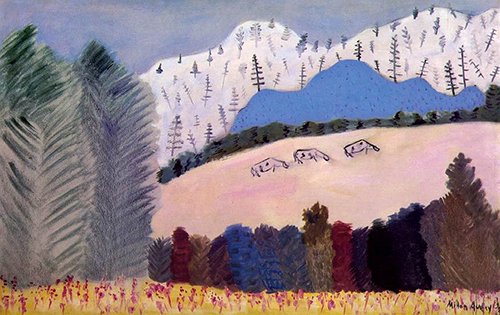 Three Cows on a Hillside, 1945
Three Cows on a Hillside, 1945 Fall in Vermont, 1935
Fall in Vermont, 1935 Horse in a Landscape, 1941
Horse in a Landscape, 1941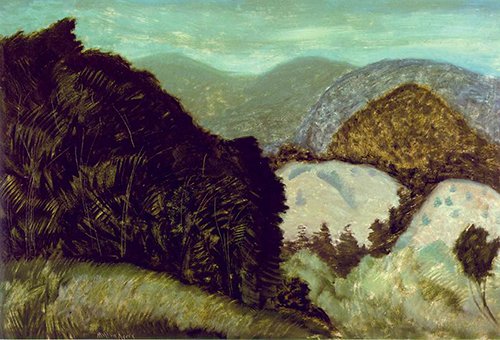 Vermont Hills, 1936Working in New York City in the 1930s–40s he became a part of the artistic community and in fact friends with Mark Rothko, who paid him a high compliment:
Vermont Hills, 1936Working in New York City in the 1930s–40s he became a part of the artistic community and in fact friends with Mark Rothko, who paid him a high compliment:
“What was Avery’s repertoire? His living room, Central Park, his wife Sally, his daughter March, the beaches and mountains where they summered; cows, fish heads, the flight of birds; his friends and whatever world strayed through his studio: a domestic, unheroic cast. But from these there have been fashioned great canvases, that far from the casual and transitory implications of the subjects, have always a gripping lyricism, and often achieve the permanence and monumentality of Egypt.” [Wikipedia]
Read about him in more detail here.
 Yellow Sky, 1958
Yellow Sky, 1958 Interlude, 1960Images from Wikiart and Pinterest.
Interlude, 1960Images from Wikiart and Pinterest.
It’s A New Season
 Happy September from this elegant pussikins and his Edwardian human! They are very laidback indeed for the first official day of spring (and drably dressed), while I am dancing with joy. I guess it makes sense in the context this would have been painted for a magazine in the northern hemisphere, where it is the first day of autumn of course – hence the pumpkin orange.
Happy September from this elegant pussikins and his Edwardian human! They are very laidback indeed for the first official day of spring (and drably dressed), while I am dancing with joy. I guess it makes sense in the context this would have been painted for a magazine in the northern hemisphere, where it is the first day of autumn of course – hence the pumpkin orange.
Whether the nights are beginning to draw in cosily, or thrilling you with scented balminess, I hope you have a wonderful month, dear readers.
Spring is Coming Tomorrow!
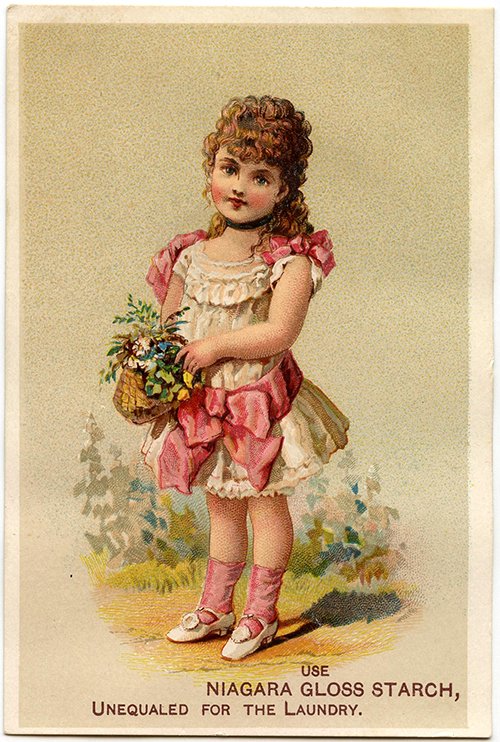 Image from The Graphics FairyYes, tomorrow is indeed the first day of spring, although our city will not know it, with the temperature plummeting down to 13°C, and rain forecast.
Image from The Graphics FairyYes, tomorrow is indeed the first day of spring, although our city will not know it, with the temperature plummeting down to 13°C, and rain forecast.
This vintage illustration comes from an old advertising trading card for laundry starch. It’s particularly apt today as I have just accepted delivery of two packets of Retro Clean!
Tomorrow may not be a good laundry day at all, but here’s to the advent to spring – and spring cleaning!



